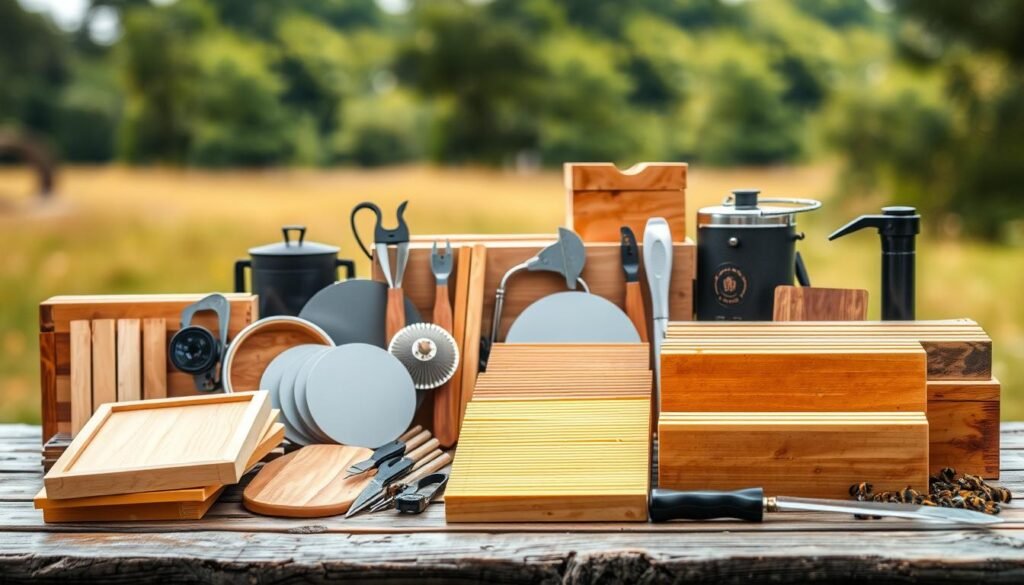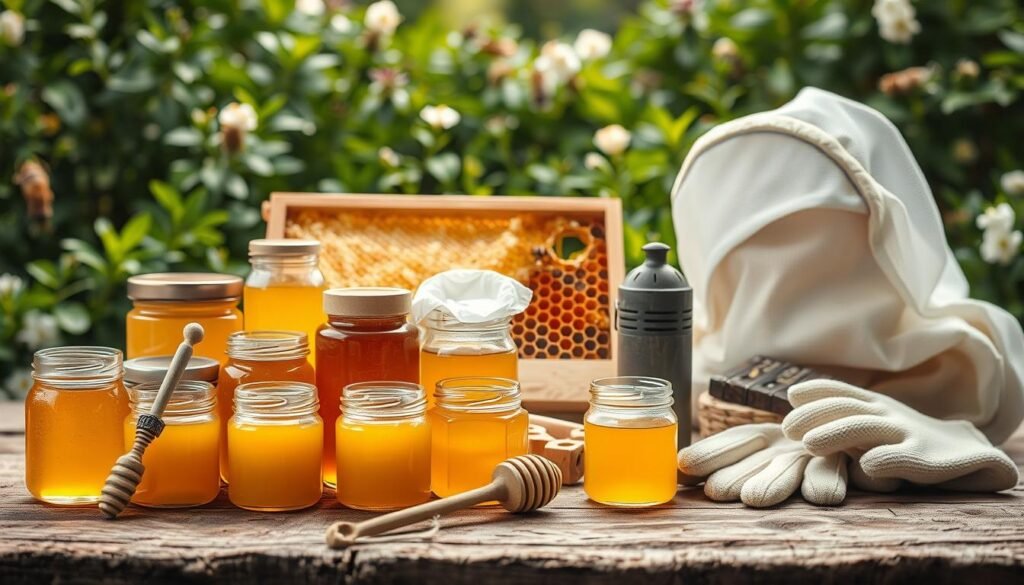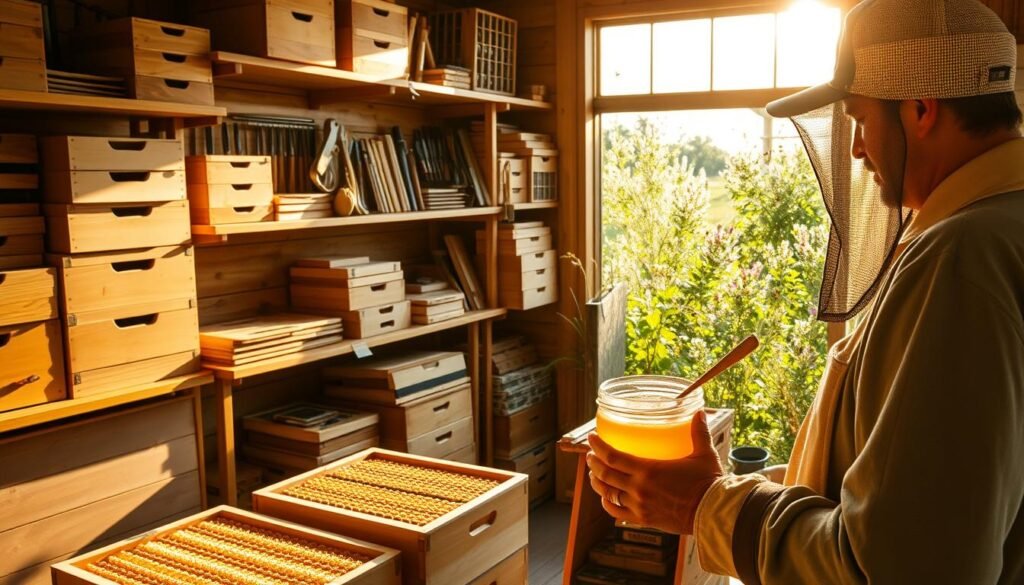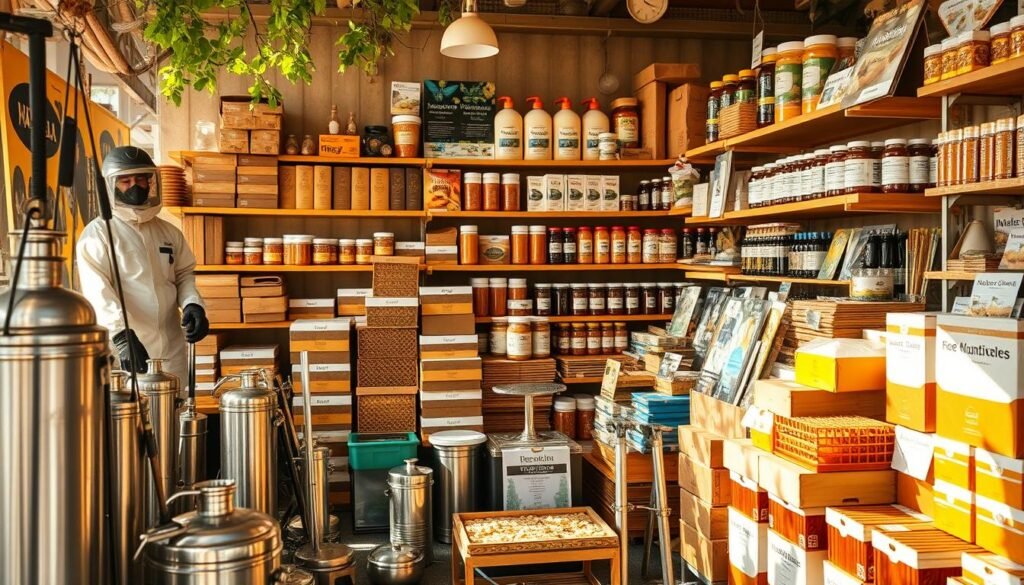Managing thriving honeybee colonies in Australia demands more than passion – it requires reliable equipment built for our unique conditions. From scorching outback heat to coastal humidity, apiarists need gear that protects both keeper and colony while streamlining hive maintenance. Modern innovations like the Flow Hive system (priced from US $519 locally) now sit alongside traditional smoker cans and hive tools, offering sustainable honey harvesting with minimal disruption.
Essential setups include protective suits with reinforced veils, durable gloves, and baseboards that withstand termite-prone environments. Seasoned professionals often emphasise the value of ergonomic designs in hive tools and queen clips – small details that reduce fatigue during long inspections. With bushfire seasons intensifying, fire-resistant hive stands have also grown in popularity across regional operations.
Investing in quality equipment pays dividends. Rot-resistant timber in brood boxes prevents costly replacements, while precise entrance reducers help colonies defend against invasive pests. As climate challenges reshape floral patterns, adaptable tools become critical for maintaining productive apiaries year-round.
Key Takeaways
- Quality gear supports colony health and honey production in Australia’s varied climates
- Durable materials and ergonomic designs enhance safety and efficiency for keepers
- Innovative systems like Flow Hive simplify harvesting while respecting bee behaviour
- Fire-resistant and pest-proof components address local environmental threats
- Strategic equipment choices boost long-term apiary sustainability and profitability
Introduction to Beekeeping in Australia
Australia’s vast landscapes host apiaries ranging from backyard setups to industrial-scale operations. The country’s climate extremes – from Darwin’s monsoons to Adelaide’s dry summers – demand gear that adapts as quickly as weather patterns shift. Local manufacturers now craft UV-resistant hive components and ventilation systems that outperform standard imports in durability tests.
Overview of the Australian Apiary Landscape
Commercial honey producers manage thousands of colonies across flowering routes, while urban enthusiasts maintain hives on suburban balconies. Regional differences dictate equipment choices:
| Region | Key Challenge | Essential Gear |
|---|---|---|
| Tropical North | High humidity | Mould-resistant frames |
| Temperate South | Winter frosts | Insulated hive wraps |
| Arid Interior | Extreme heat | Solar-reflective paint |
This diversity drives innovation. Tasmania’s leatherwood honey specialists use modified extractors, while Queensland producers favour portable hive stands for cyclone-prone areas.
Importance of Quality Equipment for Successful Beekeeping
Superior tools directly impact hive productivity. Stainless steel smokers outlast cheaper models by 5–7 years in coastal salt air. Reinforced veils prevent costly hospital visits – a critical factor given Australia’s aggressive bee subspecies.
Recent sustainability pushes see 78% of commercial operators using recycled materials in hive components. As one NSW apiarist notes: “Our gear must protect bees first, profits second.” This philosophy shapes equipment standards nationwide.
Essential Beekeeping Accessories: Tools, Equipment, and Supplies
Successful colony care hinges on purpose-built instruments that simplify daily tasks. Australian apiarists rely on two foundational items: the hive tool and smoker. These workhorses handle everything from prying sticky frames to calming defensive colonies.
Core Instruments for Hive Maintenance
The J-shaped hive tool (from US $12) lifts heavy boxes and scrapes wax without damaging woodwork. Modern smokers like the Flow model (US $49) use stainless steel chambers to produce cool smoke. This prevents overheating bees during inspections.
| Tool | Key Feature | Australian Adaptation |
|---|---|---|
| Hive Tool | Rust-resistant steel | Withstands coastal humidity |
| Smoker | Heat shield grip | Protects hands in summer heat |
| Frame Lifter | Ergonomic handle | Reduces strain during harvests |
Full-Body Protection Strategies
Thick cotton suits (like the US $120 Flow model) block stings while allowing airflow. Ventilated veils prevent fogging during humid hive checks. As Queensland apiarist Mia Roberts notes: “Proper gear lets you focus on bee behaviour, not swatting at your sleeves.”
Gloves with reinforced fingertips protect against propolis stains. Pair these with knee-high boots to deter ground-nesting insects. Regular gear inspections ensure no worn spots compromise safety during honey extraction.
Choosing the Right Equipment for Your Hive
Building a productive apiary starts with selecting components that match your local environment and management style. Durable materials and smart design choices directly influence colony health and honey yields, particularly under Australia’s demanding climatic conditions.

Selecting Frames, Boxes, and Brood Components
Western Pine frames (from $27.99) offer natural resistance to warping in humid coastal zones. Locally sourced timber supports regional industries while ensuring compatibility with standard hive dimensions. Brood boxes for Flow Hive systems ($70-80) require precise spacing to accommodate expanding populations without compromising structural strength.
Solid bottom boards (CA$52.95) provide essential weather protection, while screened variants enhance airflow during summer heatwaves. As veteran apiarist Tom Harris observes: “Your hive’s foundation determines its resilience – skimp here, and you’ll rebuild every second season.”
Evaluating Durability and Performance in Products
Critical assessment points for equipment include:
- Joint construction methods – dovetail vs. finger joints
- Material thickness – 19mm+ timber resists termite damage
- Wax compatibility – foundationless frames ($14) encourage natural comb building
Entrance reducers ($15) and queen excluders ($15) demonstrate how minor components impact hive security. Heat-treated components withstand temperature swings better than untreated alternatives, reducing replacement costs over time. When comparing brands, verify inter-system compatibility to maintain upgrade flexibility as your operation grows.
Innovations in Beekeeping: Spotlight on Modern Products
Technological advancements are reshaping traditional methods, offering smarter solutions for colony management. At the forefront stands Flow Hive’s patented honey extraction system, which lets keepers tap pure honeycomb without dismantling structures.
Flow Hive Systems and Upgrades
Three primary models cater to different needs:
| Model | Price | Key Benefit |
|---|---|---|
| Classic | US $649 | Entry-level full setup |
| Flow Hive 2 | US $739 | Enhanced viewing windows |
| Flow Hive 2+ | US $869 | Premium insulation & vents |
All packages include a $50 e-voucher for accessories. The Flow Super Lifter reduces physical strain when handling 30kg+ honey supers. Standard ($299) and Deluxe ($499) kits suit small versus commercial operations.
Critical upgrades protect investments:
- Gabled roofs (US $90) deflect monsoon rains
- Weather guards (US $35) block dust storms
- Elevated stands (US $109) prevent flood damage
As Melbourne apiarist Grace Nguyen observes: “The frame monitoring feature lets me harvest at peak ripeness – our manuka honey tests show 12% higher enzyme retention.” This precision maintains flavour profiles while minimising bee stress during extraction.
Optimising Honey Production with Quality Supplies
Maximising honey yields requires precision tools and hygienic processing systems. Australian producers face unique challenges – intense sunlight degrades plastic containers, while bushfire smoke can taint flavours. Strategic equipment choices directly affect both quantity and market value.

The Swiss Army Approach to Hive Tools
A quality multi-purpose hive tool (from CA$8.95) handles 80% of routine tasks. Seasoned keepers use it to:
- Pry apart glued frames during inspections
- Scrape excess propolis without damaging woodwork
- Measure bee space between components
Stainless steel honey strainers (CA$83.95) remove wax debris while preserving natural enzymes. Pair these with food-grade buckets and honey gates (CA$11.95) for contamination-free bottling. As NSW producer Liam Carter notes: “Our glass jars (16oz for CA$3.95) outsell plastic by 3:1 – customers taste the difference proper storage makes.”
Traditional methods demand more gear:
| Equipment | Cost Range | Flow Hive Alternative |
|---|---|---|
| Uncapping Knife | CA$25-75 | Not required |
| Manual Extractor | CA$300+ | Integrated taps |
| Filter System | CA$50-150 | Built-in screens |
Commercial operations benefit from industrial-grade gear, while hobbyists can start with basic kits. Compliance with Food Standards Australia requires numbered batch labels and moisture testing tools – non-negotiable for market sales.
Sustainable Approaches and Local Sourcing in Beekeeping
Modern apiarists recognise that environmental stewardship begins with their equipment choices. Forward-thinking manufacturers now blend ecological responsibility with practical design, creating solutions that benefit both colonies and ecosystems.
Eco-Conscious Production Methods
Western Pine dominates local production, offering natural resistance to termites and humidity. This homegrown timber slashes transport emissions by 42% compared to imported alternatives while supporting rural sawmills. Regional sourcing also means faster replacement part access during bushfire season.
Leading suppliers implement closed-loop systems:
- Solar-powered workshops cutting carbon footprints
- Wax scrap recycling programs for foundation sheets
- Water-based stains replacing chemical treatments
“Our hive components now come from plantations managing 3:1 tree replacement ratios,” notes NSW apiarist Claire Nguyen. “It’s about leaving habitats better than we found them.”
| Material | Source | Environmental Benefit |
|---|---|---|
| Western Pine | Victorian plantations | Biodegradable, low transport miles |
| Recycled poly | Post-consumer waste | Diverts 18 tonnes/year from landfill |
| Bamboo | QLD growth trials | 30% faster regrowth than timber |
These innovations align with Australia’s push for circular economies. By choosing verified eco-suppliers, keepers directly fund native vegetation corridors and Varroa mite research. The result? Healthier bees and more resilient floral networks.
Conclusion
Thriving apiaries across Australia’s diverse climates rely on purpose-built tools that balance innovation with tradition. Strategic gear selection proves vital – from reinforced hive components battling tropical humidity to insulated wraps protecting against frosts. Quality equipment becomes an extension of the keeper’s expertise, directly influencing colony vitality and harvest consistency.
Modern solutions like Flow Hive systems demonstrate how technology can simplify workflows without compromising bee welfare. These advancements pair with time-tested essentials – rust-resistant smokers, ergonomic tools – to create resilient operations. Investing in durable materials reduces long-term costs while maintaining hive integrity through extreme weather cycles.
Sustainable practices now drive equipment innovation, with recycled materials and solar-powered production reshaping industry standards. Environmentally conscious choices support both local ecosystems and global pollination efforts. Whether managing 500 colonies or a backyard setup, Australian apiarists benefit from gear that adapts to their specific challenges.
The future promises smarter tools blending data-driven insights with eco-design principles. As climate patterns evolve, so too must the equipment protecting our essential pollinators – ensuring productive hives and premium honey outputs for generations.




